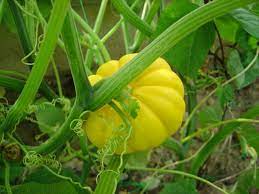Moringa Cortex: Economic Importance, Uses, and by-Products
Moringa Cortex refers to the outermost layer of a stem or root, which is responsible for various functions. The cortex of the stem includes several layers of cells just beneath the outermost protective layer, known as the epidermis. It is responsible for storage of water, nutrients, and some photosynthesis.
The root cortex of the Moringa tree is where most of the water and nutrient storage occurs. It is important for the absorption and transport of water and nutrients from the soil to the rest of the plant.
The Economic Importance and Uses of Moringa Cortex

Moringa oleifera, often referred to as the drumstick tree or the horseradish tree, is a plant native to parts of Africa and Asia. While much of the economic value and uses of Moringa are associated with its leaves, seeds, and other parts, the cortex (the outer layer of the tree’s trunk and branches) also has some economic importance and uses:
1. Timber and Wood Products: The cortex of Moringa can be used for timber and wood products. While it’s not a primary source of timber, it can be used for making small wooden items, such as tool handles, agricultural implements, and handicrafts.
2. Traditional Medicine: In traditional medicine systems, parts of the Moringa tree, including the cortex, have been used to prepare herbal remedies for various ailments. The cortex may contain compounds with potential medicinal properties, although scientific research on this aspect is limited.
3. Fiber Production: The inner bark of the Moringa tree, which includes the cortex, can be processed to extract fibers. These fibers can be used to make ropes, twine, and other woven products. The fibers are strong and durable.
4. Biofuel Production: Moringa has been explored as a potential source of biofuels, including bioethanol and biodiesel. The cortex, along with other plant parts, can be used in the production of these biofuels, contributing to renewable energy sources.
5. Erosion Control: The Moringa tree, including its cortex, is known for its deep and extensive root system. Planting Moringa trees can help prevent soil erosion, making it valuable for land conservation and maintaining soil quality in agricultural areas.
6. Agricultural and Horticultural Uses: The cortex and other parts of the Moringa tree can be used for mulching and composting in agriculture. This can help improve soil fertility and water retention in farmlands.
Read Also: Moringa Trunk: Economic Importance, Uses, and By-Products
7. Traditional Craftsmanship: In some regions, artisans use Moringa wood and bark, including the cortex, to create traditional handicrafts, decorative items, and artistic carvings.
The Products and By-products That Can Be Derived From Moringa Cortex
Moringa cortex, commonly known as Moringa bark, is a part of the Moringa tree (Moringa oleifera), which is known for its various uses and benefits. While it’s not as commonly used as other parts of the tree, such as the leaves or seeds, Moringa cortex can still yield some products and by-products.
Here are some of them:
1. Moringa Bark Powder: The bark can be dried and ground into a fine powder. This powder can be used for various purposes, including as a food additive, herbal medicine, or even for making natural dyes.
2. Traditional Medicine: In some traditional herbal medicine systems, Moringa cortex is used for its potential medicinal properties. It is believed to have anti-inflammatory and antimicrobial properties and may be used to treat various ailments.
3. Natural Dyes: The bark contains natural dyes that can be extracted and used for coloring textiles and other materials. The dye is often a brownish or reddish color.
4. Wood: The Moringa tree’s wood is quite lightweight and easy to work with, making it suitable for small-scale woodworking projects. It can be used to make tools, carvings, and other items.
5. Tannins: The bark contains tannins, which can be extracted and used in the tanning of leather. Tannins are compounds that can help preserve and strengthen leather.
6. Biofuel: In some areas, Moringa bark may be used as a source of biofuel. The bark can be burned to produce heat energy or converted into charcoal.
7. Animal Fodder: Moringa cortex can be used as animal fodder, particularly for ruminants like cattle and goats. It provides a source of fiber and nutrients for these animals.
8. Mulch and Compost: When shredded or chipped, Moringa cortex can be used as mulch or added to compost piles. It helps improve soil quality by adding organic matter and nutrients.
9. Pesticides: Some compounds in Moringa bark have insecticidal properties. These can be used to create natural pesticides for protecting crops.
In conclusion, it is important to note that while Moringa cortex has these potential uses, it’s not as widely utilized as other parts of the Moringa tree, such as the leaves, seeds, and roots, which are known for their nutritional and medicinal properties. Additionally, the use of Moringa bark should be sustainable to avoid harming the tree’s health and ecosystem. Always consult with local experts and follow ethical and sustainable harvesting practices when using Moringa cortex or any part of the Moringa tree.
Read Also: Ways to Make Money from Biodegradable Waste Materials









